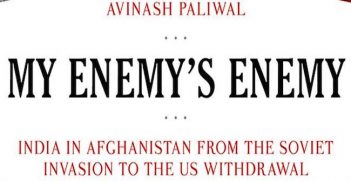Bonhomie and Business: The Modi Trump Interaction in Houston

The “Howdy Modi” event in Houston, Texas and the activities preceding it mark a new high in the India-US alliance.
Background
The “Howdy Modi” event on 22 September in the NRG Stadium in Houston will be remembered as a major turning point, not just in India-US relations but also in global economic affairs. The event came against the backdrop of a sharp upturn in the China-US trade war with successive rounds of tariff increases by the two countries culminating in the US calling China a currency manipulator. India and the US also imposed tariffs on each other’s products, albeit on a much smaller scale than in the China-US trade spat. An adverse signal was sent out when the US removed India from the Generalized Scheme of Preferences (GSP) scheme which gave preferential entry into the US to several Indian products.
In response to the worsening of global trade relations forecasts of economic growth were scaled down for the global economy as well as for many individual countries including China, India, and the US. In addition, the tools to reverse this slowdown are limited within the scope for both expansionary fiscal policy and monetary policy nearly exhausted in the aftermath of the Global Financial Crisis of 2008-09. For individual countries, therefore, it is imperative to reduce trade tensions with large trading partners and India and the US are significant trading partners of each other.
Both India and the US need to tap export markets. The US has lost markets during the trade war with China and India’s exports have been stagnating. After declining by nine percent in 2017 Foreign Direct Investment (FDI) in India rose six percent to US$42 billion in 2018. With stagnating private investment (32.3 percent of GDP in 2018-19 trending downward from its peak of 35.8 percent in 2007) the inflow of FDI needs to be enhanced. The rate of private investment also needs to be raised.
Hence, going into the Houston event Modi needed to inter alia enhance India’s trade and investment relations with the US. A number of other strategic interests also needed to be addressed. In particular, India’s robust defence of the removal of two temporary provisions in the Indian Constitution (Articles 35A and 370) giving special status to the Indian states of Jammu and Kashmir and India’s concerns of cross-border terrorism had to be underscored on the world stage.
On the other hand, the US and President Trump have high expectations from the India-US relation too. In 2017 India was the sixth largest consumer market in the world and is forecasted to become the third largest consumer market by 2030
Flourishing two-way trade with such a large consumer market would be very beneficial for the US economy. Furthermore, India provides a large pool of relatively inexpensive skilled workers who could work on American firms investing in India, thus providing a cost advantage.
Apart from these purely economic considerations, there is convergence of interests between India and the US in a number of geo-strategic areas.
Achievements before and during the Event
A number of steps were taken at least partly in anticipation of the event. Just before Modi left for the US, the Indian Finance Minister announced a stimulus package for the Indian economy. As part of this package the basic corporate tax rate was slashed to 22 percent from 30 percent so that the effective tax rate for these companies now stands at 25.17 percent, one of the most competitive rates in Asia. To boost manufacturing and the “Make-in-India” initiative, the government has slashed corporate tax rate to 15 percent, from 25 percent, for domestic companies incorporated on or after October 1 2019 making fresh investment in manufacturing.
To increase the flow of funds into capital markets, the government rolled back increased surcharge introduced in this year’s Budget on capital gains arising on sale of equity share in a company or a unit of an equity oriented fund or a unit of a business trust liable for securities transaction tax. These steps make investment in India attractive for US companies.
In a first, Indian Oil Corp., the country’s largest refiner, signed two term contracts totalling 4.6 million tonnes (mt) of US crude oil for 2019-20 from Norway’s Equinor ASA and Algeria’s state energy company Sonatrach. India is also sourcing liquified natural gas and oil from the US, with Indian firms investing $4 billion in US shale gas assets. With China and India nearing an arrangement to form a buyers’ block , US has pitched itself as a preferred energy partner to India.
These and related steps would go at least some way to assuage US concerns about trade relations with India. Commensurately, 44 US Congressmen have urged President Trump to restore India’s GSP status.
President Trump, a bipartisan group of US lawmakers, CEOs of major US companies, Houston and Texas state politicians and more than 50,000 Indian Americans attended the event. During an impassioned 50 minute speech, PM Modi emphasised all these points. He mentioned the sharp improvements in the Ease of Doing Business as well as in the Ease of Living have made India an attractive place to work in.
Modi emphasised that he had been given a strong and in some ways unprecedented mandate, in the recently completed Parliamentary elections in India. Also, major policy initiatives such as the abrogation of Articles 35A and 370 of the Indian Constitution were achieved with 2/3 majority in both Houses of the Indian Parliament, even though the ruling Bharatiya Janata Party does not yet have a majority in the Upper House. Further, to cement his support base in the Upper House, at Modi’s request the audience gave each and every Indian Parliamentarian a standing ovation. This was done ostensibly to emphasise that any deal that Trump may strike with him will not face political hurdles in India. He also exhorted the audience to give President Trump a standing ovation. These were astute political steps. Modi also all but endorsed Trump to win the 2020 Presidential election.
Trump and Modi underscored their commitment to combating terrorism and for securing their national boundaries. Modi also achieved tacit support from Trump for India’s position on the issue of Jammu and Kashmir.
In some ways, the event was the culmination of many efforts to energise India-US relations. In other ways, it was a precursor to entering into trade and strategic agreements and to further cement a deep and warm relationship between the two countries. Surely, the event was successful in achieving these objectives. Sustaining the momentum will require consistent effort from both sides, particularly in view of the fact that there are still some areas of disagreement, e.g., on the issue of climate change where India is a strong supporter of the Paris Agreement and the US is not. Nevertheless, the event holds the promise of having brought India and the US closer together to address global issues and those that bring the two countries closer and those matters that remain contentious.
Raghbendra Jha is professor of Economics and executive director of Australia South Asia Research Centre at the Australian National University. His latest book is the two-volume study: Facets of India’s Economy and Her Society.
This article is published under a Creative Commons Licence and may be republished with attribution.





